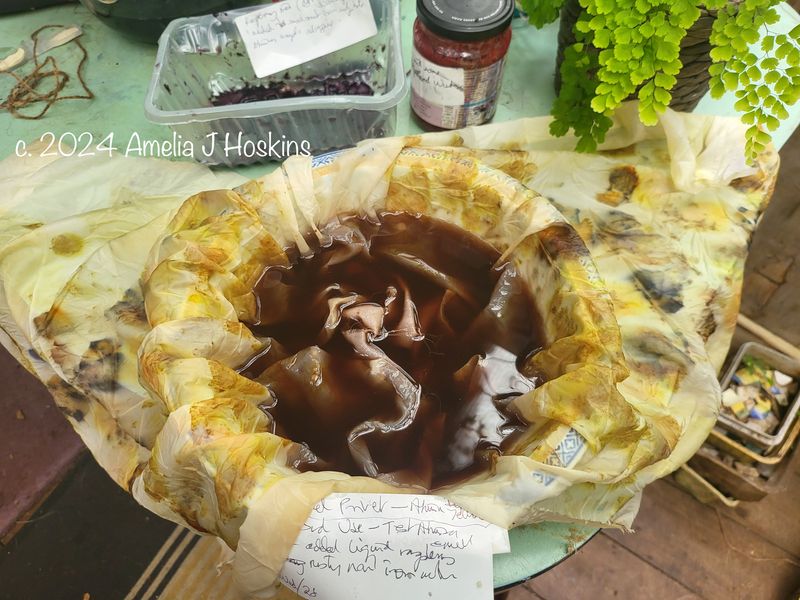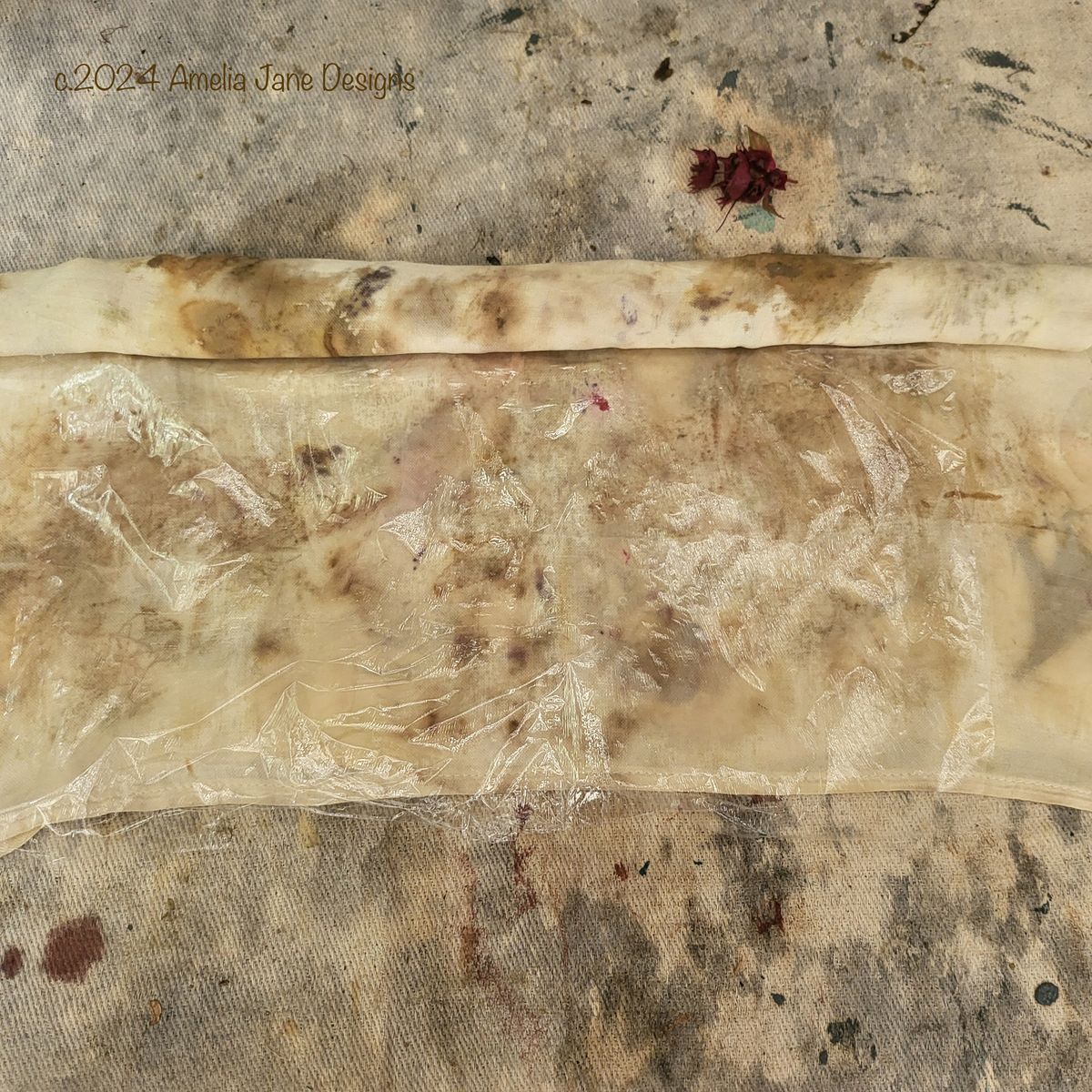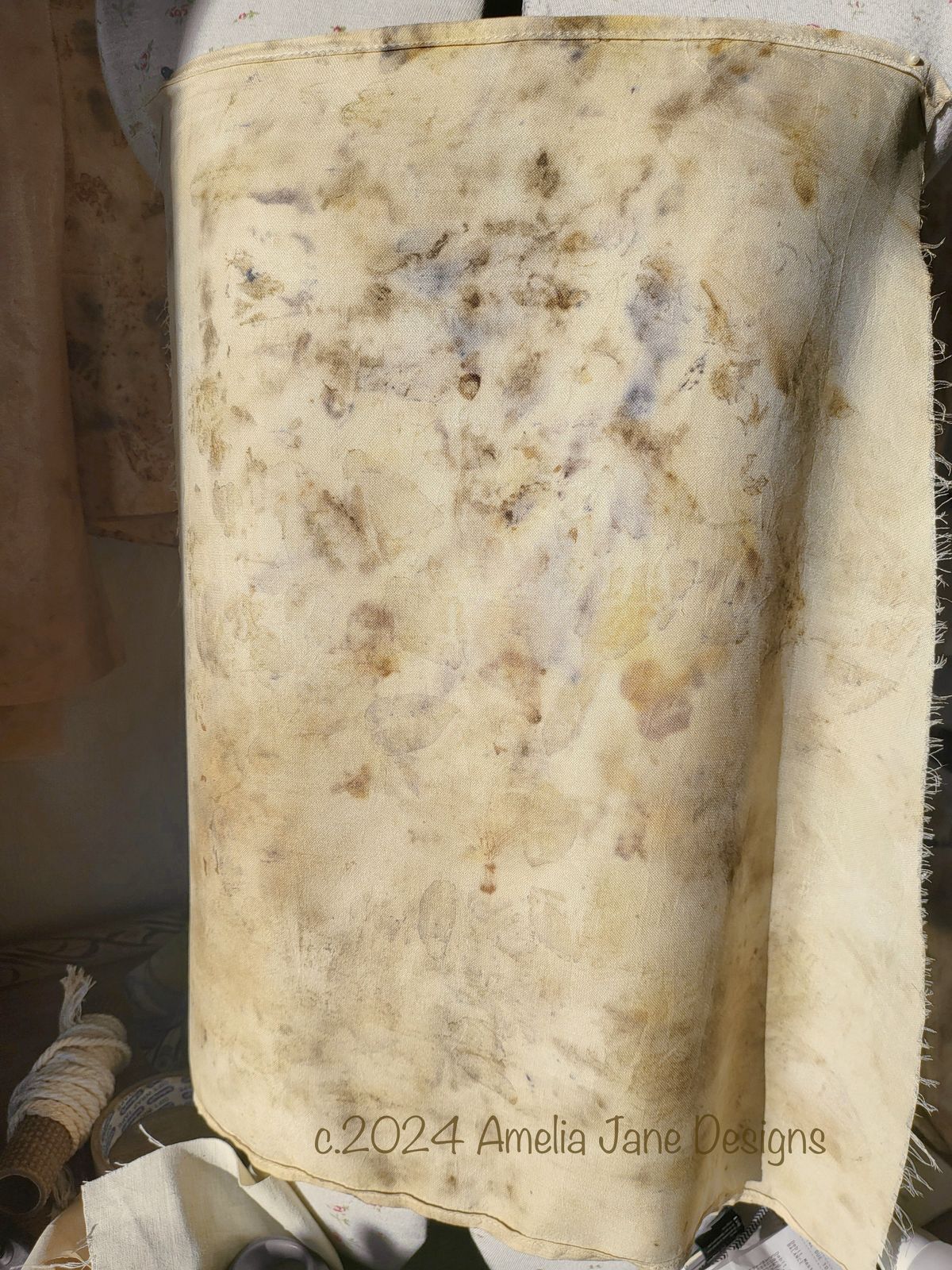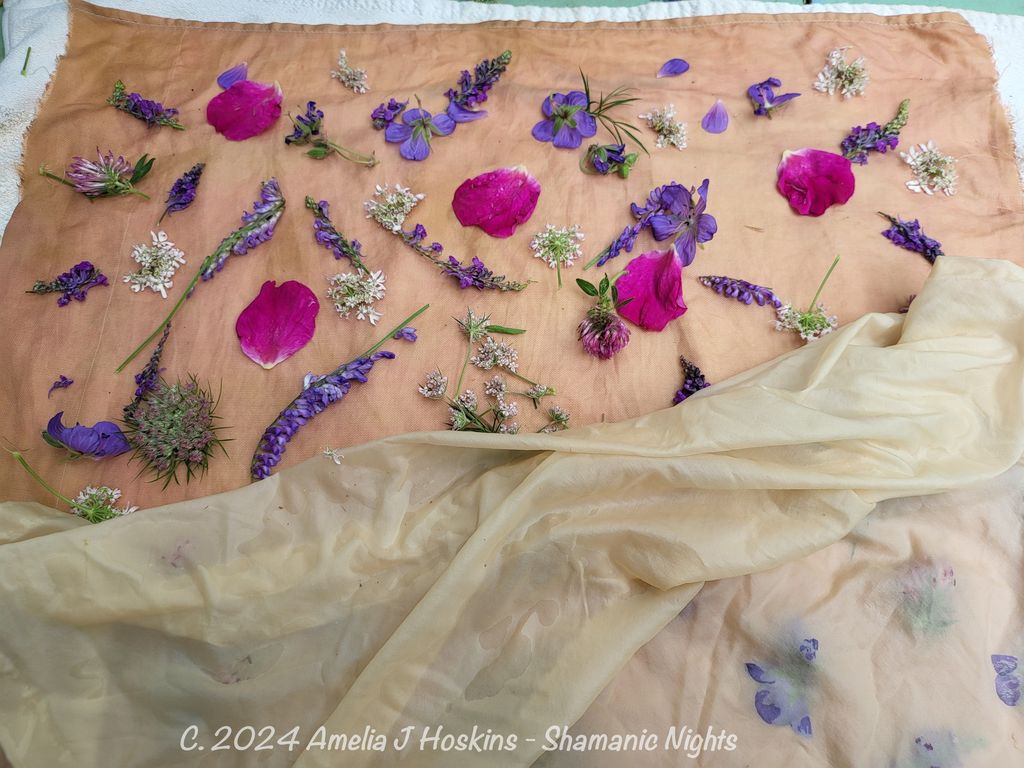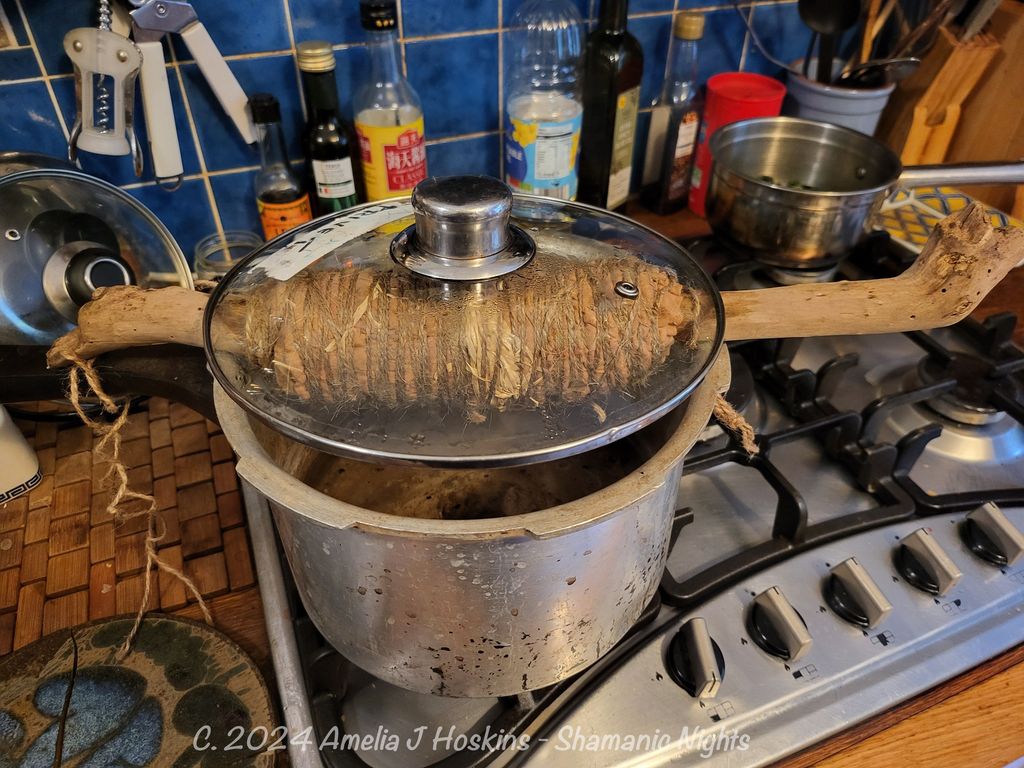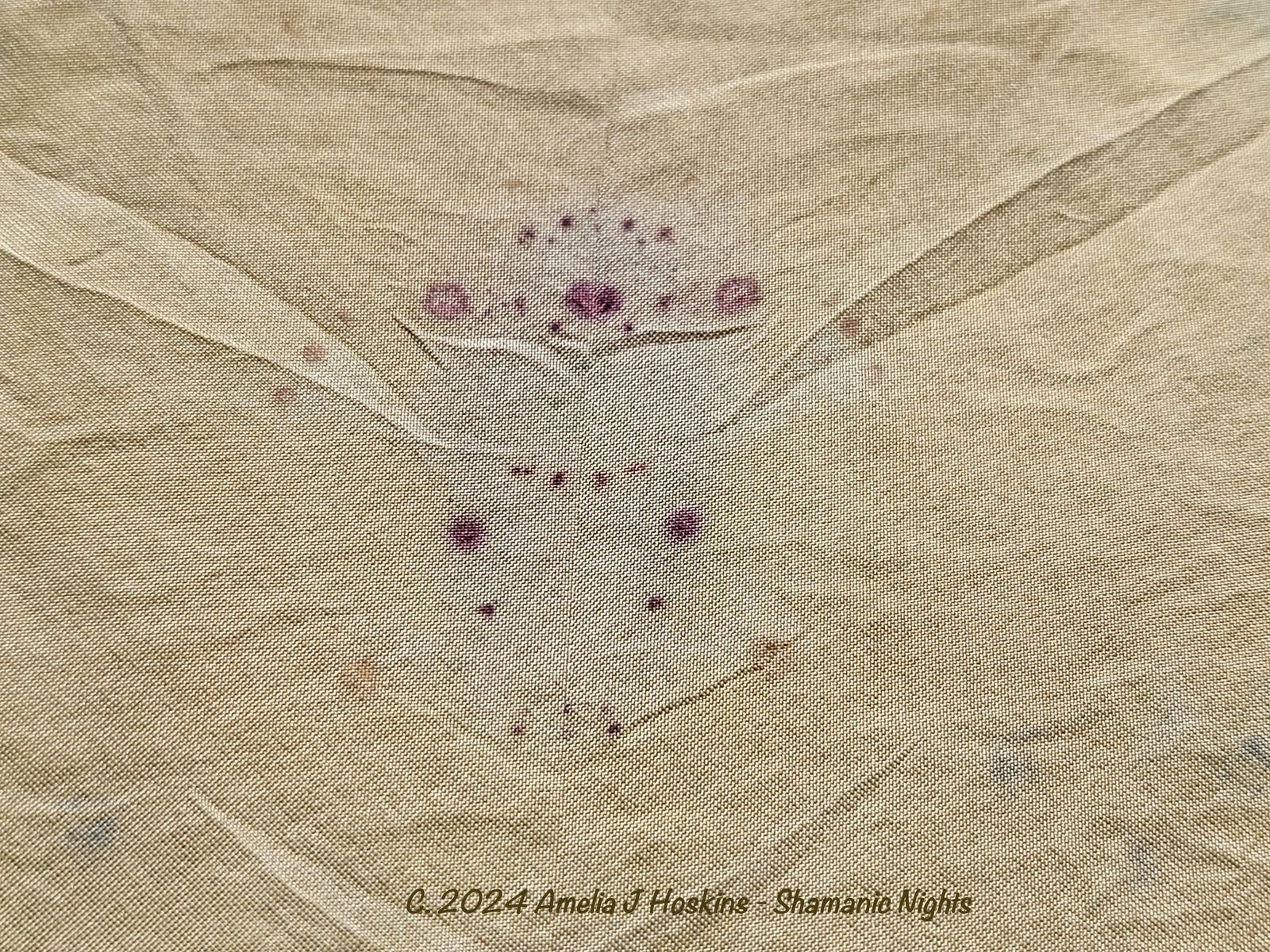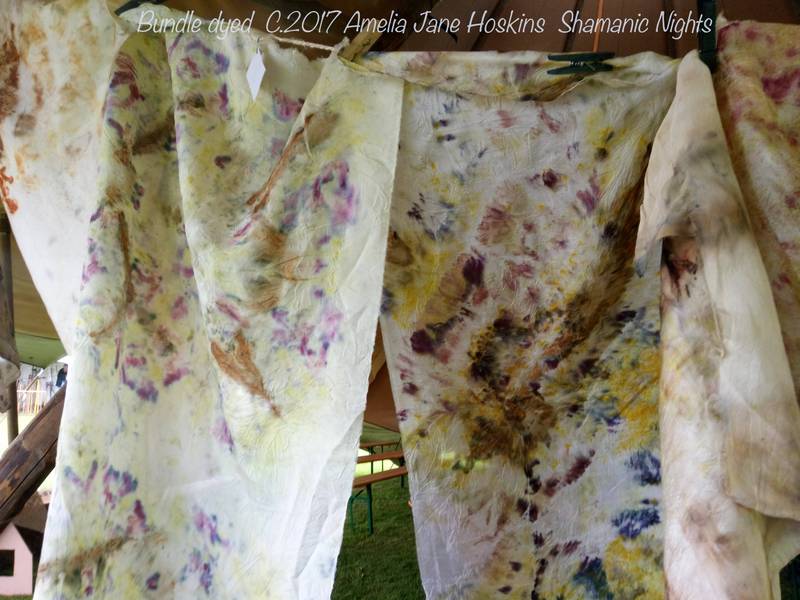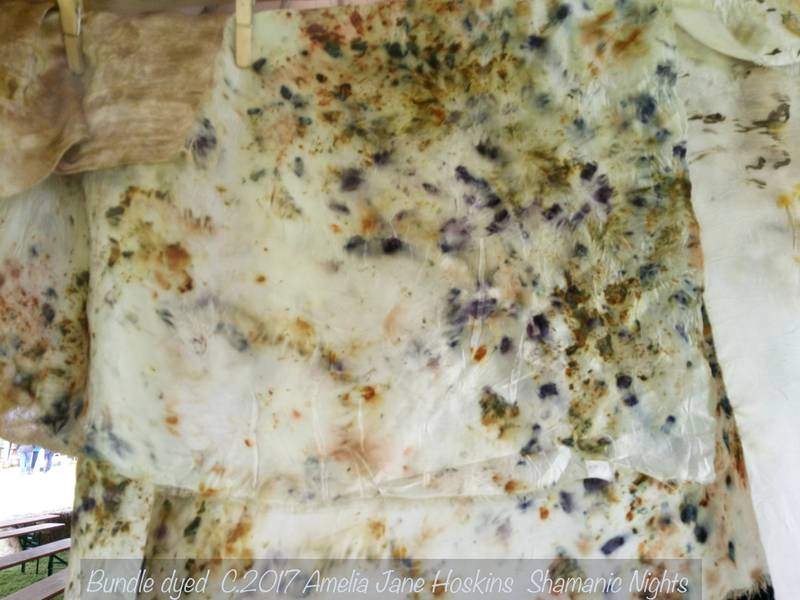Bougainvillea Test Bundle

Test bundle steam: bougainvillea petals, antirrhinums, linaria marjoram, dahlia leaves
Interesting result with orange from bougainvillea. Navy from crimson antirrhinums. Folded carefully into strip then wrapped around stick and steamed on trivet. Closed pan. Clingfilm barrier helps highlight single petals, without over bleeding. Possibly 1hr steamed (no note made); probably too long, causing dulling and blurring, especially brown of majoram.
Steamed result
Cerise bougainvillea created 'day-glo' orange. Dahlia leaves create pale green. Marjoram dried flowers only brown. Antirrhinums violet until modified to navy. Result was too yellow, so soaked peice in bowl with previously used weakened rusty nail water (iron) and raspberry juice to dull off; just enough.
Bougainvillea orange can probably be modified brighter in another test. Antirrhinums very promising navy; grow more! [tests for 2025]
This silk result is still bright, or brighter, and more promising than originally thought. It matches very well to a piece of privet dyed silk [for dress design]


